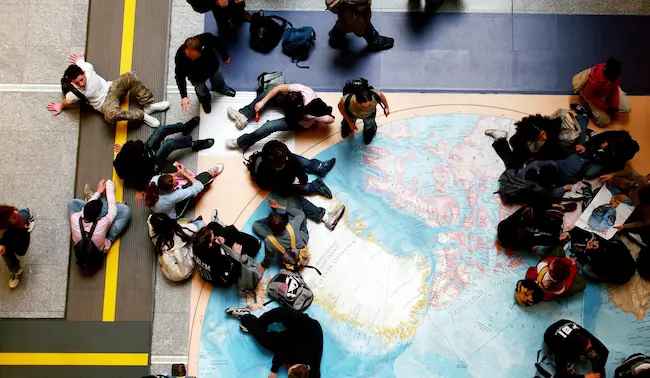“I’m glad we’ve begun to raise our daughters more like our sons, but it will never work until we raise our sons more like our daughters.”
-Gloria Steinem
Who are these women? Do your students know?
Teaching Channel blog author Marcee Harris, said it best. “When teaching about Black history; incorporate black history year around, continue learning, reinforce that “Black” history is American history, connect issues in the past to current issues, and include the political and social context of the community’s context for social justice.”
Although women’s history is not the same as the history of the black community, racism and sexism do have some things in common; a belief in hierarchy, a learned sense of superiority, and the goal of, whether consciously or subconsciously, continuing the caste system. Racism is defined as “any attitude, action, or institutional structure which systematically subordinates a person or group because of their color.” Sexism is defined as “any attitude, action, or institutional structure which systematically subordinates a person or group because of their sex,” or, as explained in the best-selling book Caste, by Isabel Wilkerson:
“When we assume that the woman is not equipped to lead the meeting or the company or the country, or that a person of color or an immigrant could not be the one in authority, is not a resident of a certain community, could not have attended a particular school or deserved to have attended a particular school, when we feel a pang of shock and resentment, a personal wounding and sense of unfairness and perhaps even shame at our discomfort upon seeing someone from a marginalized group in a job or car or house or college or appointment more prestigious than we have been led to expect, when we assume that the senior citizen should be playing Parcheesi rather than developing software, we are reflecting the efficient encoding of caste, the subconscious recognition that the person has stepped out of his or her assumed place in our society.”
There are many approaches to teaching women’s history. One idea is to use photos (like those above) as catalysts for curiosity, “Who are these women, what are their stories, and who came before them?”
Photo A is Sarah Thompson. Thompson is the first woman referee in a Super Bowl. An engaging lesson could be exploring Thompson’s path to becoming a professional referee in a men’s sport.
Discussion Questions:
- Did Sarah Thompson play football?
- Do you have to have played football to be a football referee?
- How did Thompson become interested in refereeing football?
- How long has Sarah Thompson been a referee?
- How does one get selected to referee the Super Bowl?
- How much does Thompson earn and does she earn the same amount as her male counterparts?
- How many women referees are there in football? How many women coaches?
- Are women referees (coaches) in other sports?
Photo B is Amanda Gorman, 2017 Youth Poet Laureate and the youngest inaugural poet in U.S. history. If you missed it, here is Gorman performing her inaugural poem and here is Gorman, the first ever poet to perform at a Super Bowl, reciting her poem “Captains” (not far from Sarah Thompson!)
Discussion Questions:
- What is a poet laureate, and what is a youth poet laureate?
- Has there always been poetry at the U.S. inauguration?
- What other poets have performed at inaugurations?
- What is Gorman’s background and how did she become interested in poetry?
- How do the arts teach?
- What poems are familiar to us and who wrote and recites them?
Photo C is Vice President, Kamala Harris. ICYMI, Ms. Harris is the first ever female Vice President, and she is the first woman of Indian and Black heritage to command the office of Vice President of the United States of America.
Discussion Questions:
- What was Kamala Harris’ upbringing and career journey?
- How many years have our Presidents and Vice Presidents been male and why do you think it has taken so many years for a woman to hold the office of VP?
- Will there ever be a woman President?
- Have any other women run for Vice President or President of the U.S.? If so, who were they?
- Have women held offices like President or Prime Minister in other countries?
- How many Senators or U.S. Representatives are women in the U.S.?
- What are some theories about why there may be fewer women in power positions?
We must continue learning and continue teaching—all year long. There is much to learn.
Resources:
“Caste: The Origins of our Discontents” by Isabel Wilkerson
“Do Racism and Sexism Go Together?”
“Racism and Sexism–A Collective Struggle: A Minority Woman’s Point of View”







